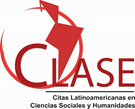Analysis of ancestral gastronomy and its cultural relevance
Abstract
The gastronomy of Latacunga, an Ecuadorian city noted for its rich culinary tradition, has been the subject of analysis to understand traditional dishes and cultural impact. The history, ingredients and culinary techniques of the typical dishes of Latacunga have been examined. As well as the influence on the cultural identity and the economic and tourist potential of the region. To achieve these objectives, a methodology based on ethnographic analysis has been used. In fact, it included interviews with key informants, a review of historical literature and direct observation of the preparation and consumption of traditional dishes. Dishes such as Tortillas de Palo, Chaguarmishqui, Champús and Ugtotortillas have been investigated. So local ingredients, ancestral techniques and consumption contexts have been identified. Among the results, the need for native ingredients, such as corn and cabuya candy, has been highlighted in the preparation of these dishes, which are rooted in local traditions. Furthermore, it has been found that these dishes play a crucial role in festivities and religious events, while also presenting notable potential as tourist attractions. In conclusion, the gastronomy of Latacunga has vitally reflected the cultural heritage and offers significant potential for the development of gastronomic tourism. To preserve these traditions and promote their appreciation, strategies to promote and support local producers have been recommended, as well as the dissemination of ancestral culinary knowledge.
Keywords:
Gastronomy, Culinary techniques, Cultural identity, Traditional cuisine
Downloads
Published
How to Cite
Issue
Section
License
Copyright (c) 2024 Editorial "Universo Sur"

This work is licensed under a Creative Commons Attribution-NonCommercial-NoDerivatives 4.0 International License.
La editorial "Universo Sur", de la Universidad de Cienfuegos, publica el contenido de la Revista "Universidad y Sociedad" bajo una Licencia Creative Commons Atribución-NoComercial-SinDerivar 4.0 Internacional.
© Podrá reproducirse, de forma parcial o total, el contenido de esta publicación, siempre que se haga de forma literal y se mencione la fuente.










